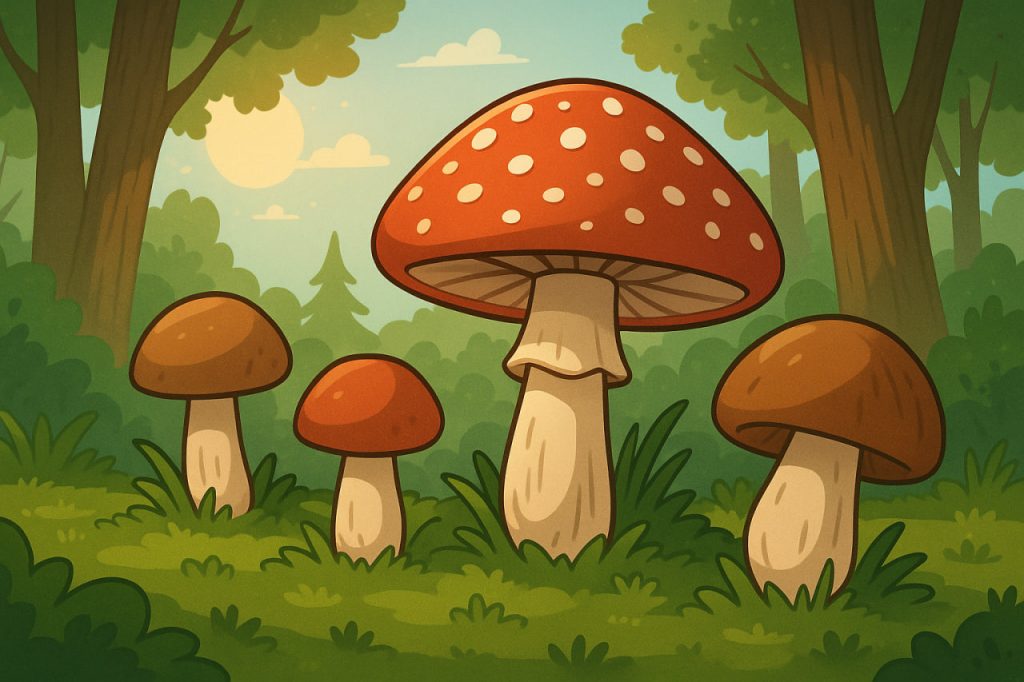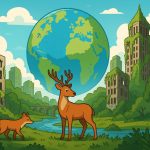Mushrooms are among the most fascinating and mysterious organisms on Earth. Neither plants nor animals, they belong to their own biological kingdom — Fungi. Though often associated with forests and damp soil, fungi are everywhere: in the air, on rocks, and even inside our bodies. They play a vital role in nature’s balance, recycling nutrients, forming symbiotic relationships, and even producing medicines that save lives.
The Hidden Life of Fungi
What we see as a mushroom is only the visible part of a much larger organism. Beneath the ground lies a complex network of thin threads called mycelium, which can stretch for kilometers. Mycelium acts as the “nervous system” of the forest — it breaks down organic material, exchanges nutrients between trees, and helps plants communicate. Scientists call it the “wood wide web.”
Diversity and Adaptation
There are more than 5 million species of fungi, though only about 150,000 have been identified. Some mushrooms are edible and nutritious, like chanterelles and porcini, while others are toxic or even deadly, such as the death cap. Certain species glow in the dark, while others survive in extreme environments — from arctic tundra to tropical rainforests. Fungi are true masters of adaptation.
Ecological Importance
Fungi are essential for ecosystems. They decompose fallen leaves, wood, and dead animals, returning carbon and minerals to the soil. Without them, forests would be buried under layers of waste. Some species, called mycorrhizal fungi, live symbiotically with plant roots, helping them absorb water and nutrients in exchange for sugars. This relationship supports the growth of entire forests.
Mushrooms and Humans
For humans, mushrooms serve many purposes. In cooking, they are valued for their taste and nutrition, rich in protein, fiber, and antioxidants. In medicine, fungi have revolutionized science — the antibiotic penicillin, discovered by Alexander Fleming in 1928, came from a mold. Today, scientists use fungi to develop new drugs, biodegradable materials, and even eco-friendly building bricks.
The Dangers and Wonders
While some mushrooms are safe to eat, others can be highly toxic. Mushroom poisoning remains a danger for inexperienced foragers. Yet, the same chemical diversity that makes some fungi poisonous also makes others medically valuable. Modern research into psychedelic mushrooms is exploring potential treatments for depression and anxiety, showing that fungi may still hold many untapped secrets.
Interesting Facts
- The largest living organism on Earth is a fungus — a honey mushroom (Armillaria) in Oregon covering over 9 square kilometers.
- Some fungi can “control” insects, turning them into living hosts before sprouting spores from their bodies.
- Mushrooms contain vitamin D when exposed to sunlight, just like humans do.
Glossary
- Fungi — a kingdom of living organisms that includes mushrooms, molds, and yeasts.
- Mycelium — the underground network of fungal threads that forms the main body of the fungus.
- Mycorrhiza — a symbiotic relationship between fungi and plant roots.
- Decomposition — the breakdown of dead matter into simpler substances by microorganisms.
- Penicillin — the first antibiotic discovered, derived from a fungus.


